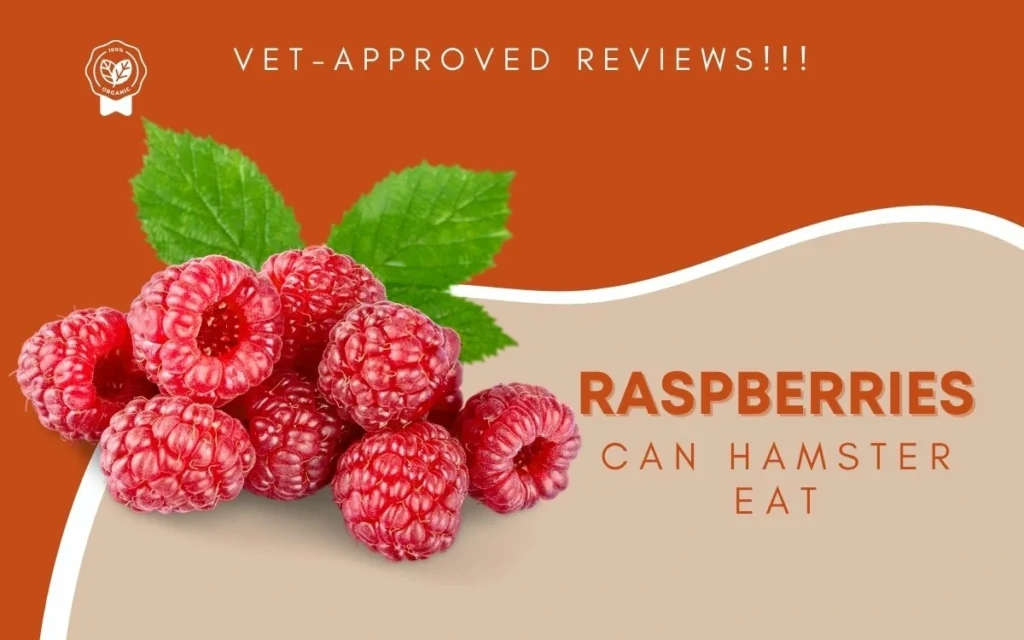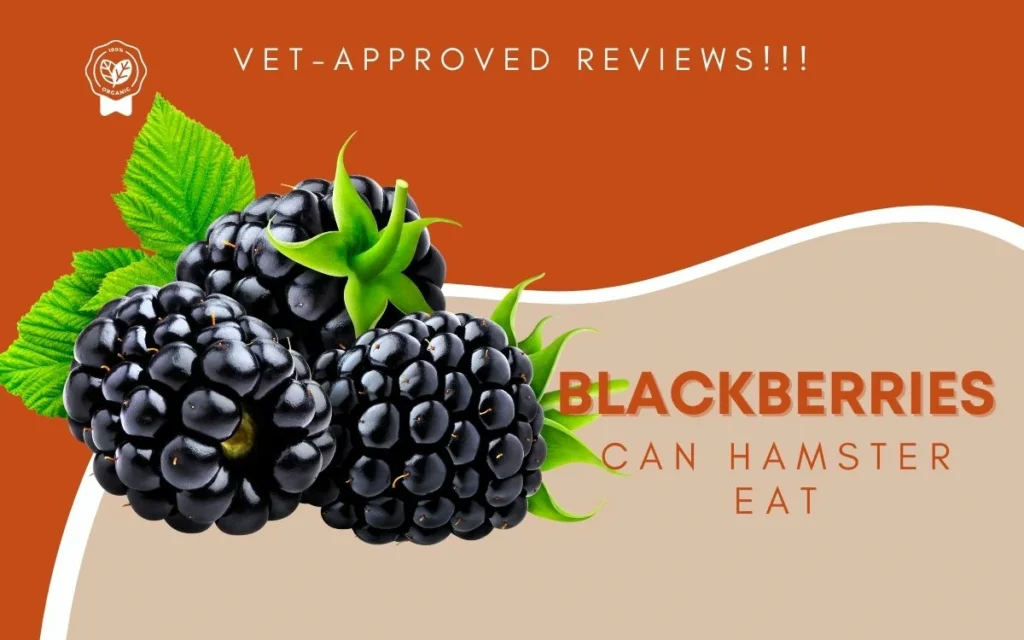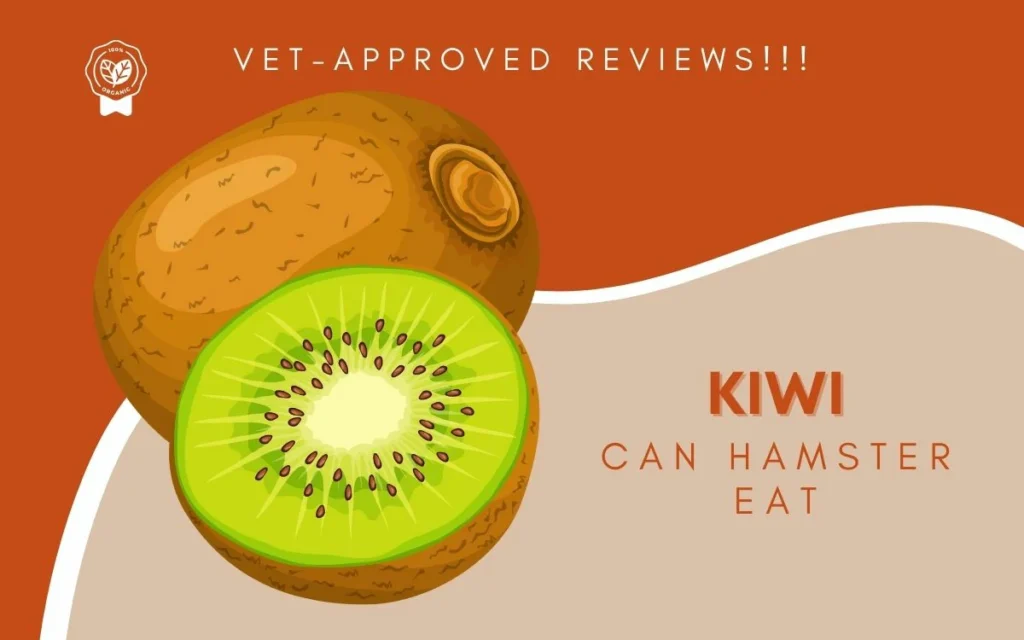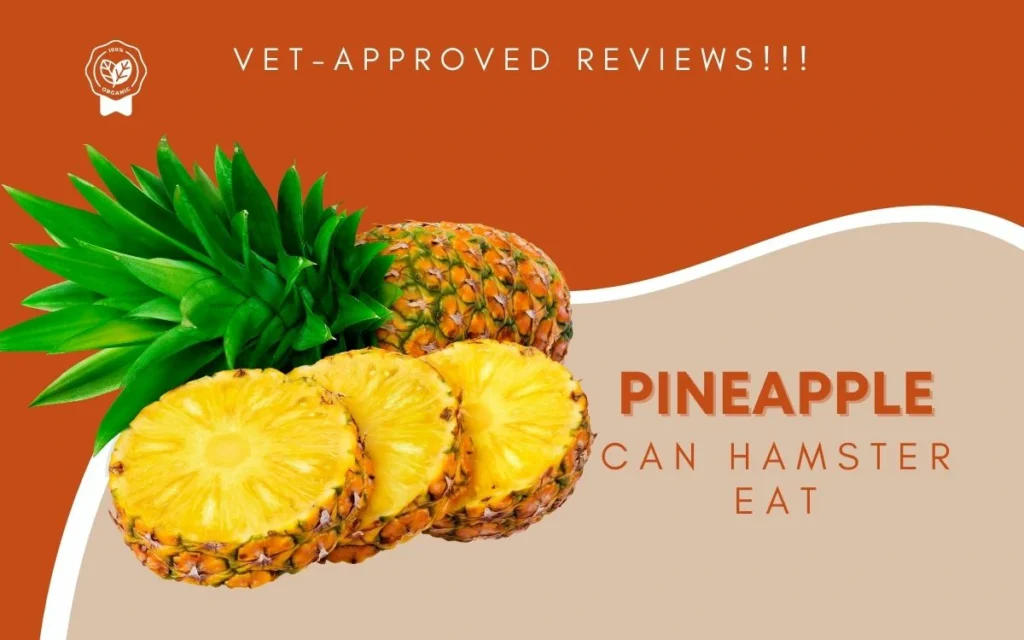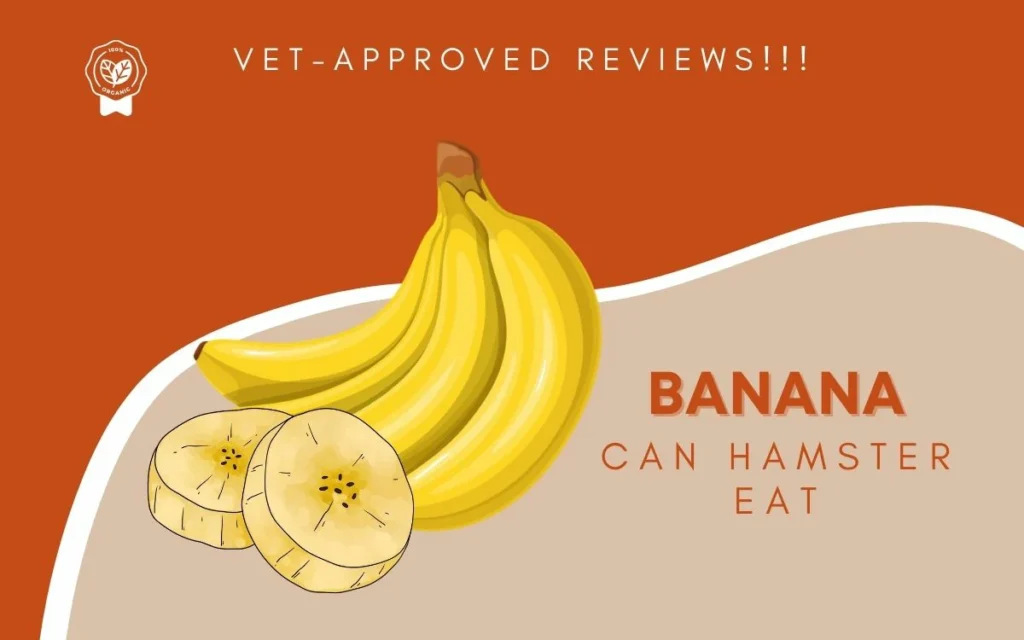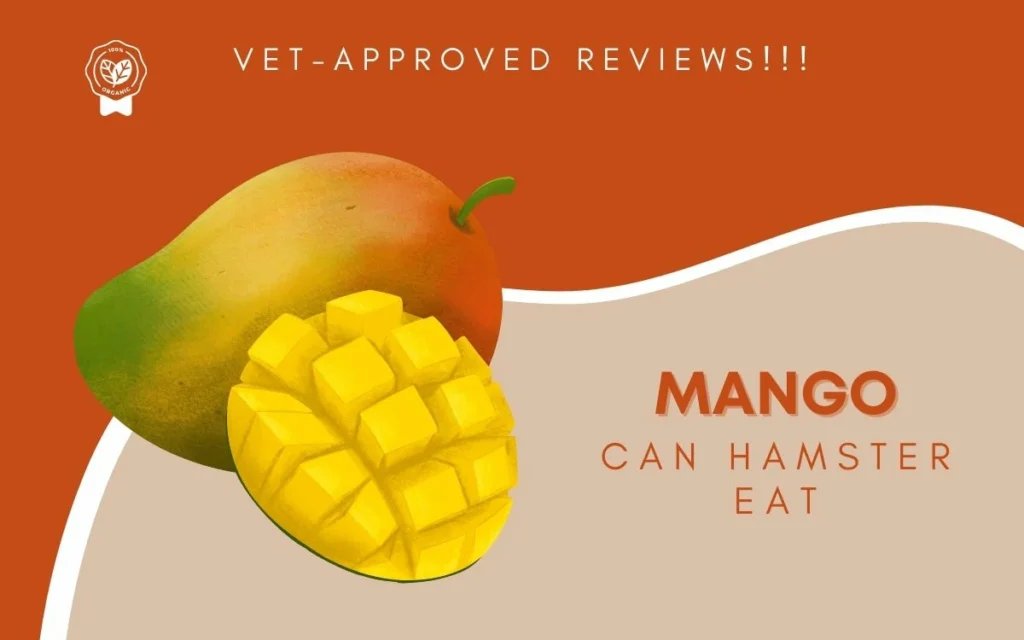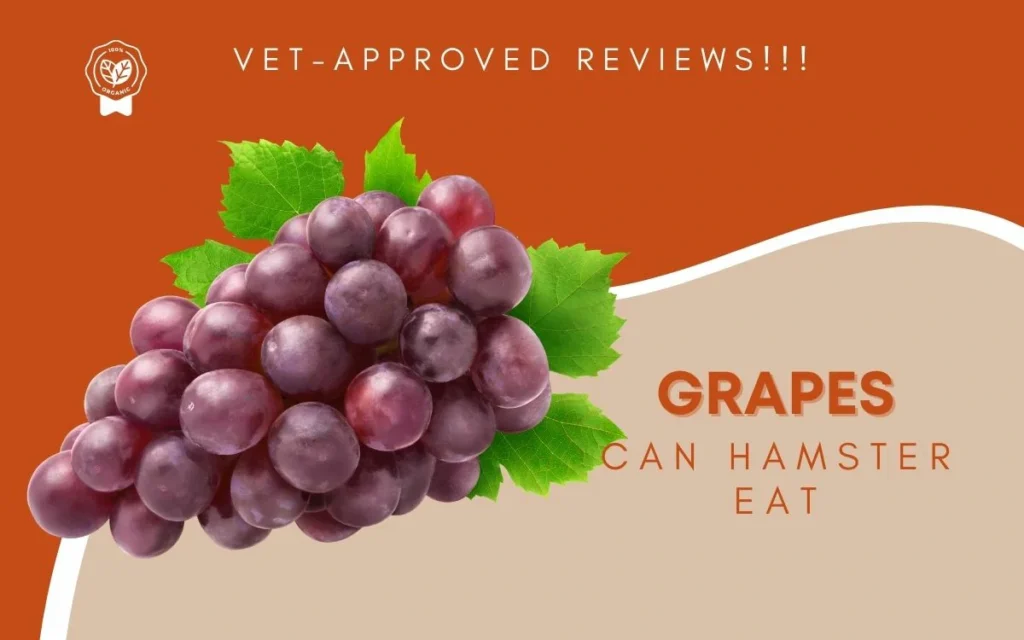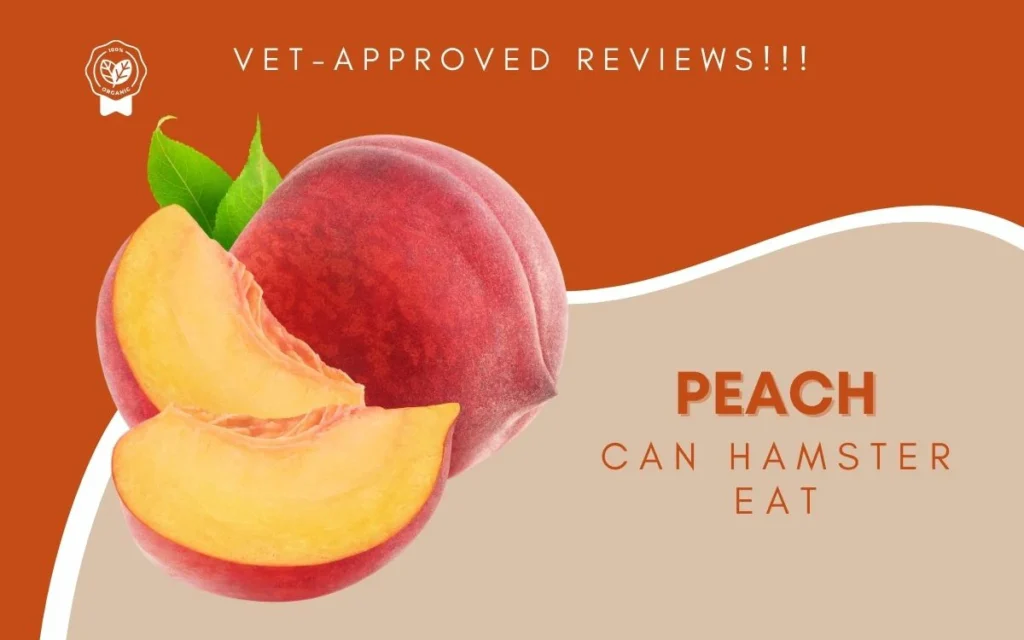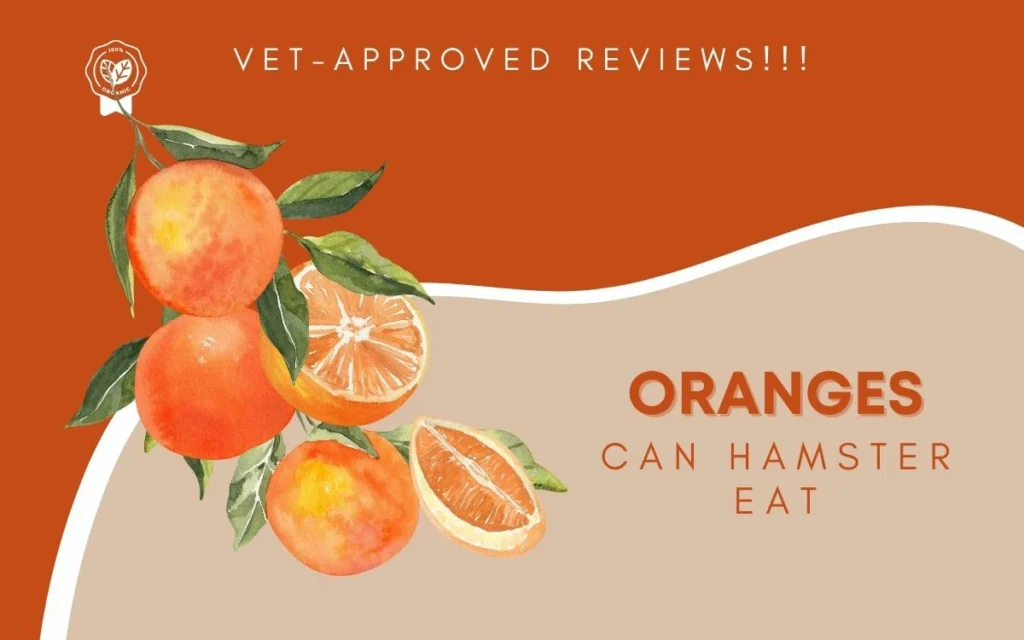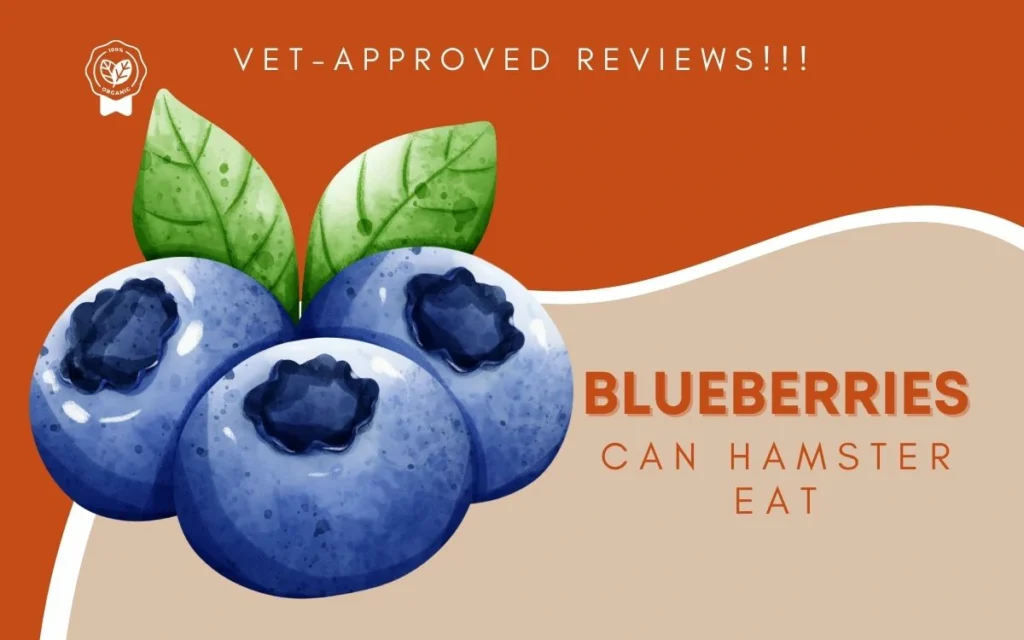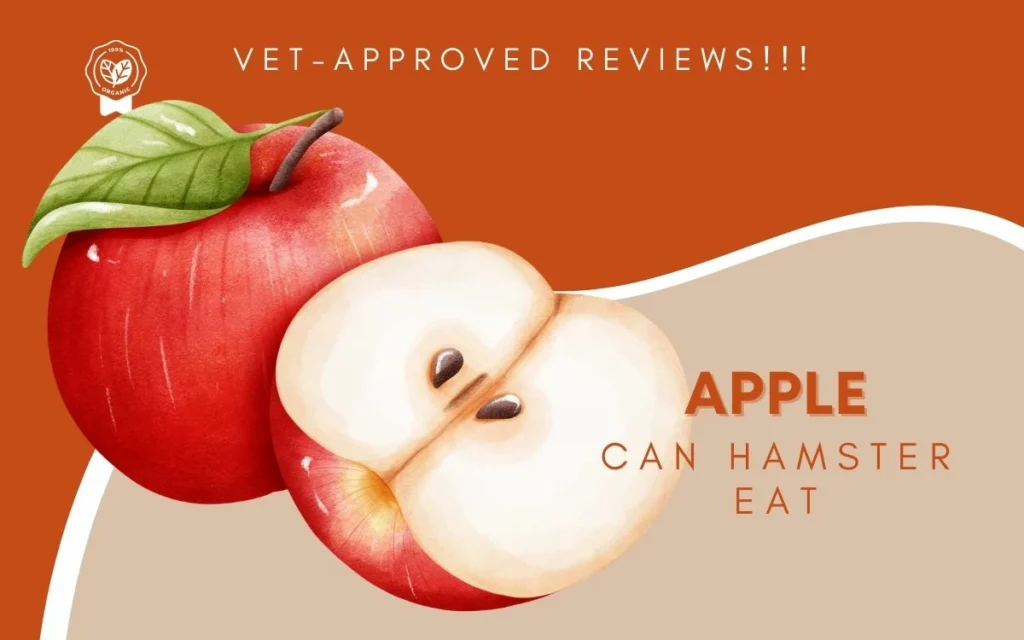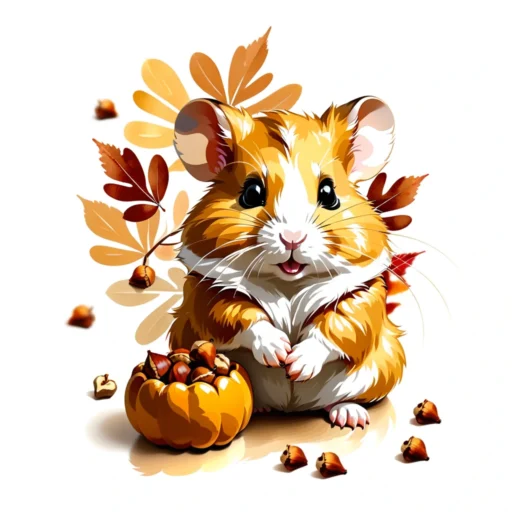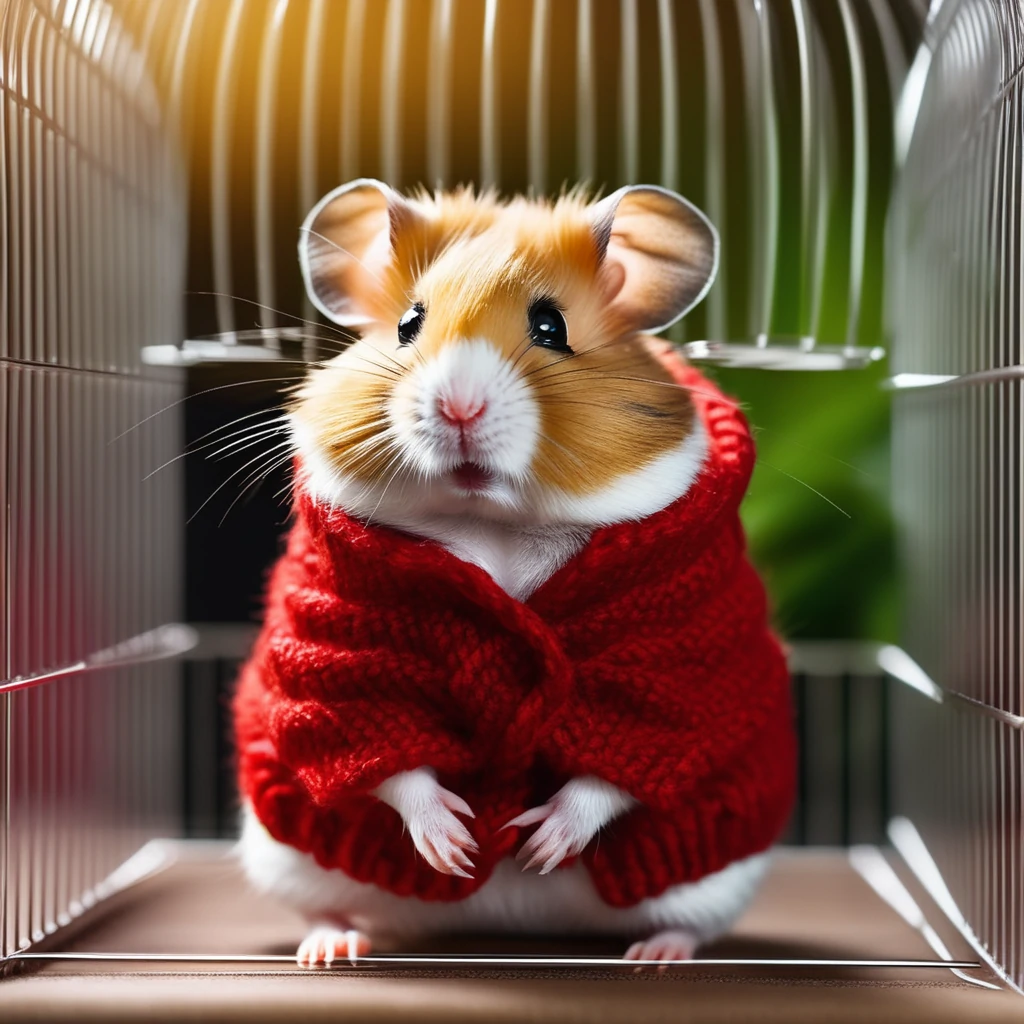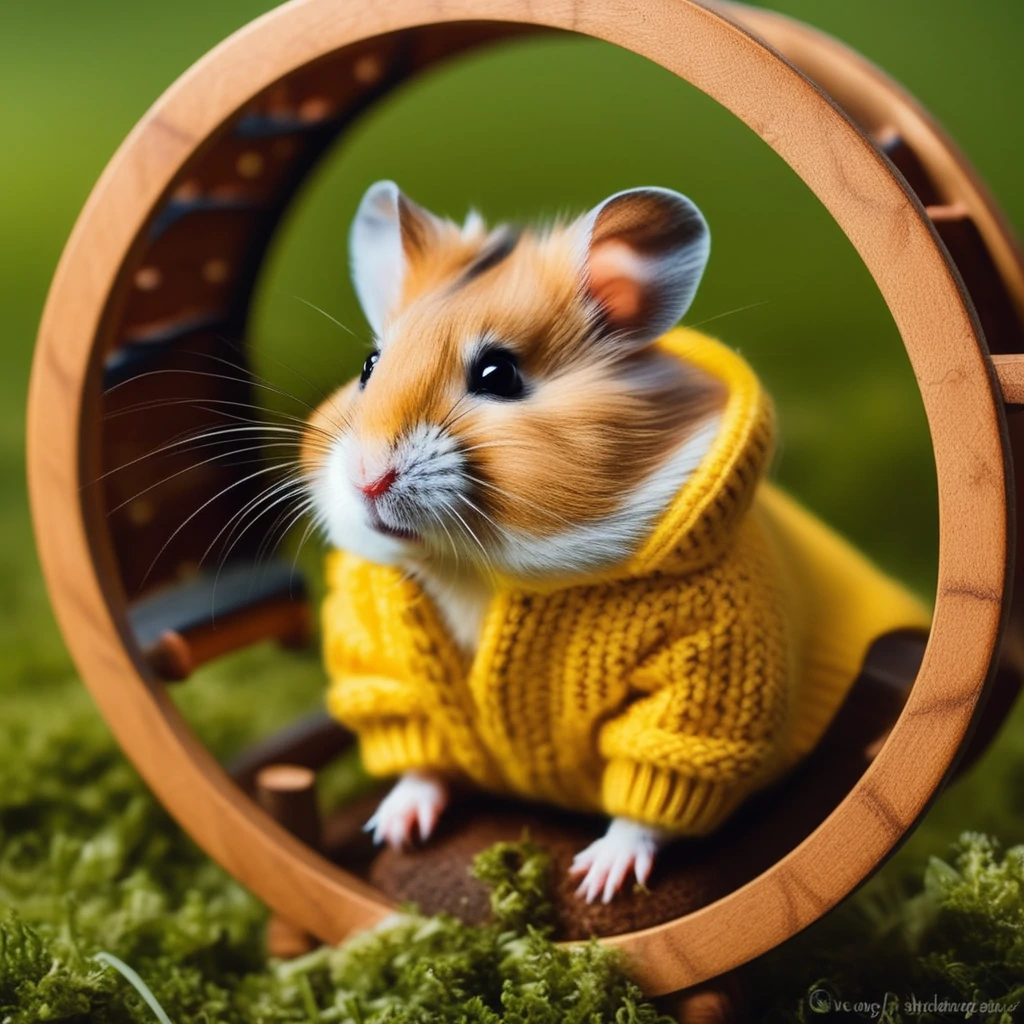The quick answer is yes, hamsters can eat peaches in moderation. Peaches contain beneficial nutrients like vitamin A, vitamin C, potassium, and fiber that may boost your hamster’s health.
However, peaches also have high sugar content, so you need to feed them only as an occasional treat.
Too much peach can lead to diarrhea, upset stomach, weight gain, and other problems in hamsters.
Syrian Hamsters Eat Peaches:
Syrian hamsters, also known as golden or teddy bear hamsters, are among the most common pet hamsters. Their slightly larger size allows them to handle more textured fruit compared to smaller dwarf hamsters.
Are Peaches Safe for Syrian Hamsters?
Yes, Syrian hamsters can eat small amounts of ripe, soft peaches as an occasional treat. Peaches contain beneficial vitamins and minerals that can supplement your hamster’s main diet. Specifically, they provide:
- Vitamin C, A, and E: Support immune and reproductive health
- Potassium: Important for muscle, heart, and nervous system function.
- Fiber: Promotes healthy digestion.
Peaches also contain antioxidants and phytochemicals that may help prevent certain chronic illnesses.
When feeding peaches, always remove the pit first, as it contains cyanide that can poison hamsters if chewed or swallowed. The flesh should be soft, ripe, and fresh. Firm, underripe peaches are difficult for hamsters to bite and properly digest. Overripe, bruised peaches may also cause digestive upset.
To play it safe, feed your Syrian hamster small, thin slices of peach about the size of their ear. Offer tiny pieces twice a week at most alongside their regular diet.
Monitor them closely to ensure the fruit does not cause loose stools, a sign of gastrointestinal distress. Reduce the amount or frequency if this occurs.
Can Syrian Hamsters Eat Peach Pits, Skin or Leaves?
No. Peach pits, skin, leaves, and stems all contain cyanogenic compounds that release cyanide when ingested. At high enough doses, cyanide poisoning can cause seizures, trouble breathing, coma and even death in hamsters.
While a single cherry pit likely won’t contain enough cyanide to seriously harm an adult Syrian, it’s better to avoid the risk altogether. Only feed the soft, ripe fruit flesh inside pits and skin. Discard all other non-edible peach parts.
Feeding Peaches with Yogurt to Syrian Hamsters.
Combining small bits of peach with plain, unsweetened yogurt makes an excellent treat for Syrian hamsters. Yogurt supports digestive health with probiotics and protein for immune function. The peach gives antioxidants, vitamins, minerals and natural sugars.
When mixing, use all natural, additive-free yogurt. Avoid sugary or artificially flavored yogurts as excess sugar is unhealthy. Mix in a few tiny peach chunks at a time and offer your Syrian no more than 1-2 teaspoons per week. Monitor stool quality and reduce feeding if diarrhea occurs.
Dwarf Hamsters Eat Peaches:
Dwarf hamsters, including Campbell’s, robo, Chinese and Siberian species, are significantly smaller than Syrian hamsters. Their tiny size means they should only eat soft peach flesh, not whole slices.
Can Dwarf Hamsters Eat Peaches Safely?
Yes, but dwarf hamsters should only eat trace amounts of peach as an occasional snack. Their mini gut struggles digesting excess sugar and fiber from fruit. Unlike Syrians, dwarfs also have delicate teeth and jaws unfit to bite whole peach slices.
To offer peach, scrape off tiny crumbs, no bigger than a dwarf’s pinky nail. Choose soft, bright fruit avoiding under ripe peaches.
Feed 1-2 tiny peach bits every 1-2 weeks at most. Do not offer any more if your dwarf hamster gets diarrhea after eating it.
Peach flesh still gives beneficial minerals, including potassium and magnesium to support muscles, nerves and metabolism. But dwarf hamsters gain little nutrition from the small traces they can safely eat. Focus on quality hamster-specific pellets and produce carrots for their main diet instead.
Parts of Peach That Are Unsafe:
As with Syrian hamsters, all dwarf hamsters should avoid peach pits, skin, stems and leaves. The cyanide within peach parts can quickly overwhelm dwarfs due to their size. Stick only to soft internal fruit that you can easily mash between two fingers.
Discard and rinse your hands after cutting peaches to prevent microscopic residues getting into your hamster’s cage. Better yet, offer an occasional high quality hamster treat instead of actual peach to avoid any cross-contamination risks.
Can Dwarf Hamsters Have Peach Yogurt?
Do not feed dwarf hamsters yogurt with peach or alone. Cow’s milk dairy leads to painful digestion problems and potentially deadly diarrhea in small hamsters. Their gut lacks proper enzymes to break down compounds in milk products.
If you want to provide probiotic gut support, seek a non-dairy alternative like Bene-Bac. Speak to your exotic veterinarian for supplement recommendations specific to your dwarf hamster’s needs.
Hamsters Eat Peach Pits:
Whether you have a Syrian, dwarf or other pet hamster variety, peach pits should be kept far away from their habitat. Inside pits lie compounds that release lethal cyanide when chewed or ingested.
Can a Hamster Safely Eat Peach Pits?
No! Peach pits or seeds contain a compound called amygdalin which converts to hydrogen cyanide. Swallowing just one pit likely won’t kill an adult Syrian hamster, but it only takes 0.5 to 3.5mg of cyanide per kg body weight to be lethal. That’s roughly one bitter almond seed or cherry pit.
Smaller dwarf hamsters need ingest even less cyanide to cause breathing failure, seizures, coma and death. Pits also pose a dire choking risk if swallowed whole blocking airways.
While the peach flesh is safe for hamsters, peach pits should be kept far away from their habitat, food dish and play area at all times. It’s simply not worth the severe poisoning risk.
Signs of Cyanide Poisoning in Hamsters:
If you suspect your hamster nibbled or consumed any part of a peach pit or seeds, monitor them closely for these signs of cyanide toxicity:
- Hyperventilating or trouble breathing
- Red or pink mucus membranes turning blue, gray or pale
- Collapsing or losing consciousness
- Severe sudden diarrhea
- jaundice
- Strange “almond” odor on breath or in urine
- Seizures
- Coma
Cyanide prevents cells from using oxygen properly. Without swift treatment, it can kill pet hamsters in less than an hour.
If you observe any concerning symptoms call your exotic vet or emergency clinic immediately. Prompt antidotal therapy and supportive care are vital to survival.
To prevent poisoning, discard peach pits in closed garbage cans hamsters cannot access. Rinse hands after cutting fruit and prevent contamination of their enclosures, bowls or toys.
Hamsters Eat Peach Skin:
Like pits inside, peach skins or leaves also contain dangerous compounds that can harm hamsters. All hamster owners should discard peelings rather than risking toxicity.
Is Peach Skin Safe?
No. While less dangerous than the pit, peach skins or leaves still pose a risk you should not take with small pets. Peach peels contain traces of cyanide producing amygdalin like their seeds. They also have unknown pesticide residues if non-organic.
Consuming peelings may cause mild stomach upset. But skins pose an impaction risk too since hamsters cannot properly digest the fibrous texture.
Hamsters like Syrian already suffer frequent GI impactions that can be fatal without prompt vet care. So the extra fiber from tough fruit peelings only compounds this hazard for them and smaller dwarf species.
For safety, only feed the soft edible inner flesh you’d eat yourself. Ditch peelings in closed lid garbage away from pets.
Can Hamsters Eat Dried Peach Skin?
No, you should not intentionally feed any type of peach skin to hamsters. Dried fruit skins may be marketed as chew sticks for small animals at pet stores. But these pose even greater impaction and choking hazards over fresh peach peel.
Dried fruit skin chews get extremely tough,dense and fibrous once dehydrated. Hamster teeth usually cannot effectively gnaw or break these down. If ingested, mass pieces can rapidly clog the digestive tract much like fabric or carpet fibers might.
Symptoms of impactions include appetite loss, lethargy, bloating and diarrhea. Impactions can ultimately be fatal if untreated since they prevent proper food digestion. Always remove dried fruits from cages and avoid enticing hammies with these hazardous chews.
Hamsters Eat Peach Yogurt:
Mixing peach pieces into yogurt may sound like a tasty treat idea. But the dairy and sugar content make this combo unsuitable and hazardous for most hamsters.
Can Hamsters Have Yogurt with Peaches?
Syrian hamsters may tolerate trace amounts of plain yogurt with peach. But all dwarfs and Roborovski species should avoid dairy products altogether. Their tiny digestive system struggles breaking down components in milk and cheese. Eating yogurt often causes nutrient malabsorption, diarrhea, dehydration and painful belly cramps in small hammies.
Even for Syrians, limit yogurt feeding to just 1-2 teaspoons per week at most.
Rather than yogurt, focus on optimal nutrition from hamster-specific kibble and produce like cucumber. For the occasional snack, offer a tiny piece of soft peach flesh instead of mixing into dairy.
Roborovski Hamsters Eat Peaches:
As the smallest domestic hamster species, Roborovski hamsters have unique nutritional requirements. Their minuscule size limits how much peach they can safely consume.
Can Robos Have Peaches?
Yes, but only trace amounts very occasionally. Unlike larger Syrian hamsters, Roborovski hamsters should not eat actual slices or pieces of peach. Their tiny jaw is unfit to bite fruit and their sensitive digestion gets disrupted by excess sugar or fiber.
Instead, use a clean knife to gently scrape off trace residues of ripe, soft peach flesh. Tiny crumbs that stick to the blade are an appropriate serving size for “Robos”. Offer just 1-2 pinhead-sized bits every 2-3 weeks at most.
These minute fruit residues may provide antioxidants to benefit health. But they offer marginal nutrition compared to commercial hamster diet. Stick to quality pellets as the dietary staple instead.
Monitor for loose stools after feeding traces of peach. Reduce or avoid peach altogether if diarrhea results.
Parts of Peach That Are Hazardous:
As with every hamster species, Roborovskis should never consume peach pits, skins, stems or leaves. The risks of impaction, choking and cyanide toxicity are extremely severe for these tiny animals. Be vigilant to keep even minute particles of peach pits or skins out of their habitat.
Teddy Bear Hamsters Eat Peaches:
The teddy bear hamster is one of the most adorable hamster breeds around. But did you know these fluffy “teddies” are actually just a distinct type of Syrian hamster? So golden Syrian hamster diet and care guidelines also apply to teddy bears.
Can Teddy Bear Hamsters Have Peaches?
Yes! As Syrian hamsters, teddy bears can safely enjoy small servings of ripe peach flesh. Peach provides nutritious vitamins, minerals and antioxidants. It gives a nice sweet flavor change to supplement commercial pellets too.
For your Teddy bear hamster, offer thin peach slices about the size of their ear every 1-2 weeks. Remove any pits first and gently scrub the skin to prevent residue contamination of their cage.
Monitor stool quality after feeding fruit as excess sugar causes diarrhea in some hamsters. Reduce portions if your teddy’s tummy seems upset.
Parts of Peach to Avoid:
Beautiful as they are, Teddy Bear hamsters cannot safely eat any parts of the peach except the soft internal flesh.
Peach pits, skin, stems and leaves all contain traces of deadly cyanide that can poison small pets. Discard these hazardous parts immediately out of paws’ reach
Stick only to ripe, bright fruit pulp Teddy Bears can nibble with their sharp front teeth. Rinse your own hands after cutting peach to prevent inadvertent contamination of their home too.
Peach Nutrition Stats per 100 gm:
| Nutrition | Peaches | Health Considerations |
| Calories | 37 calories per 100g | Peaches offer some fast metabolizing carbohydrates that give hamsters a quick energy boost |
| Fiber | 1.5 g per 100g | The small amount fiber supports healthy hamster digestion |
| Sugar | 8.4 g per 100g | The natural peach sugars must be limited to avoid diarrhea or obesity. |
| Vitamin A | 332 IU per 100g | Vitamin A supports hamster skin, vision, growth and immune defenses. |
| Vitamin C | 6.6 mg per 100g | The vitamin C in peaches helps hamsters fight infections and produce collagen for wound healing. |
| Potassium | 190 mg per 100g | Potassium is an electrolyte mineral to balance hamster nerve function |
Can Hamsters Have Peaches?
Yes, most hamsters can eat a few bites of peach as an occasional treat. Specifically, peaches are safe for the following popular hamster species:
- Syrian or Golden hamsters
- Dwarf Campbell’s hamsters
- Dwarf Winter White Russian hamsters
- Roborovski dwarf hamsters
- Chinese dwarf hamsters
Ultimately, the safety of peaches depends more on the quantity you feed rather than hamster species. All hamsters should only eat peaches sparingly.
Are Peaches Good For Hamsters?
Peaches taste sweet to hamsters, providing a nice change of flavor from their regular diet. They can also deliver nutritional perks noted previously. However, the pitfalls of peaches – high sugar, low protein/fat, and GI issues preclude them as daily hamster food.
Here’s a quick rundown of pros and cons:
Pros
- Provide vitamin A and vitamin C
- Give added fiber for better digestion
- Tasty treat that hamsters enjoy
Cons:
- High in sugar – risky for obesity, diabetes
- Low protein and fat content
- May cause loose stools or diarrhea
- Can disrupt feeding on nutritionally balanced hamster diet
The Correct Diet Is Important:
Peaches can be part of a healthy, balanced hamster diet. But these high sugar fruits are no substitute for a high quality pellet and hay based main diet.
Give hamsters constant access to timothy or meadow hay. The long fiber strands promote healthy teeth and digestive function.
Choose a complete hamster feed made up of 18 to 22% protein, 4 to 7% fat, and 25 to 30% fiber. Avoid sugary mixes with dried fruit bits, honey, or corn.
Offer fresh chopped vegetables like broccoli, kale and carrots daily. Greens provide vital nutrition without excess sugar.
Add a few bites of fruit like peach only 2 to 3 times per week at most.
A proper hamster diet fuels an active little pet and prevents obesity leading to diabetes and early death. Limit high sugar or fat hamster treats, not basic healthy hamster staples.
What Are Other Healthy Alternatives To Peaches In A Hamster’s Diet?
- Blueberries
- Raspberries
- Strawberries
- Banana
- Apple
- Melon
- Orange
- Unsweetened yogurt
- Cooked egg white
- Plain cooked chicken
- Chopped nuts
Avoid citrus fruits, onion/garlic, chocolate, cookies, nuts, junk food, dried fruit, and hamster muesli mixes containing sugary dried fruits and vegetables. These provide little nutrition and pose serious health risks to hamsters.
How Much Peach Can A Hamster Eat?
Dietary needs vary considerably based on your hamster’s age, size, and activity level. Use these peach serving guidelines as a starting point but adjust quantities to your pet’s unique requirements:
Baby Dwarf Hamsters:
- None until 12 weeks old
- 1 tiny bite per week from 12 weeks onward
Adult Dwarf Hamsters:
- 1 thin peach slice once a week
- Adult Syrian Hamsters:
- 2-3 small peach slices twice a week
- Limit to once weekly for less active/elderly hamsters
When trying peaches for the first time, offer just a bite in the beginning. If your hamster has a sensitive tummy, restrict it to once monthly. Increase peach treats if they digest it well but don’t overdo it.
FAQs:
Are peaches high in sugar?
Yes, peaches are considered a high sugar fruit. Their pulp contains about 9% sugar, similar to cherries.
Can hamsters eat peach jam?
No. Peach jam, jelly, preserves, or other processed products are unsuitable treats for hamsters. Added sugar makes these dangerously unhealthy, especially for dwarf hamsters or robo species.
Even “no sugar added” versions still tend to have sweeteners that disrupt delicate hamster digestion. Avoid fruit spreads altogether.
Do hamsters need Vitamin C supplements?
No, healthy hamsters eating balanced commercial diets get sufficient Vitamin C already. Supplements usually aren’t needed unless a vet recommends it to treat an underlying condition.
Avoid giving hamsters human multivitamins as incorrect dosing and additives can make them ill.
Why do hamsters store food in their cheeks?
Hamsters have elastic cheek pouches on both sides of their head. These allow carrying food back to their nest to eat later or cache for future shortages.
It’s a natural instinctive behavior dating back to wild hamsters needing to stockpile ample food.
Pet hamsters may still harbor this innate urge even with a consistently full food dish in their cage.
Conclusion:
In moderation, peaches can be a safe, nutritious supplement to your hamster’s balanced diet. Be mindful of proper quantities based on species, age, and your pet’s unique needs. Discontinue peach treats if it causes appetite or digestive issues. With some care and common sense, your furry friend can enjoy nibbling on sweet, juicy peaches as a special snack!

